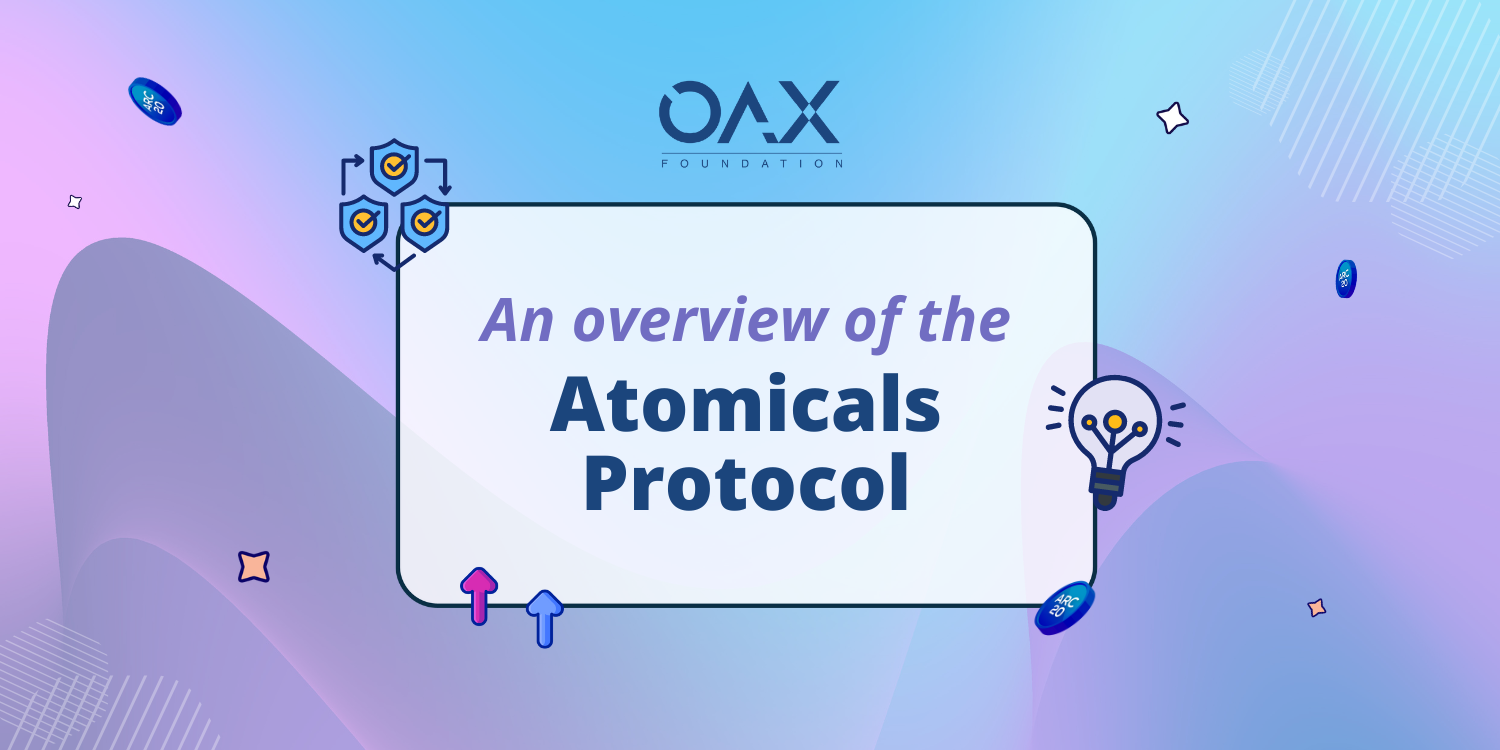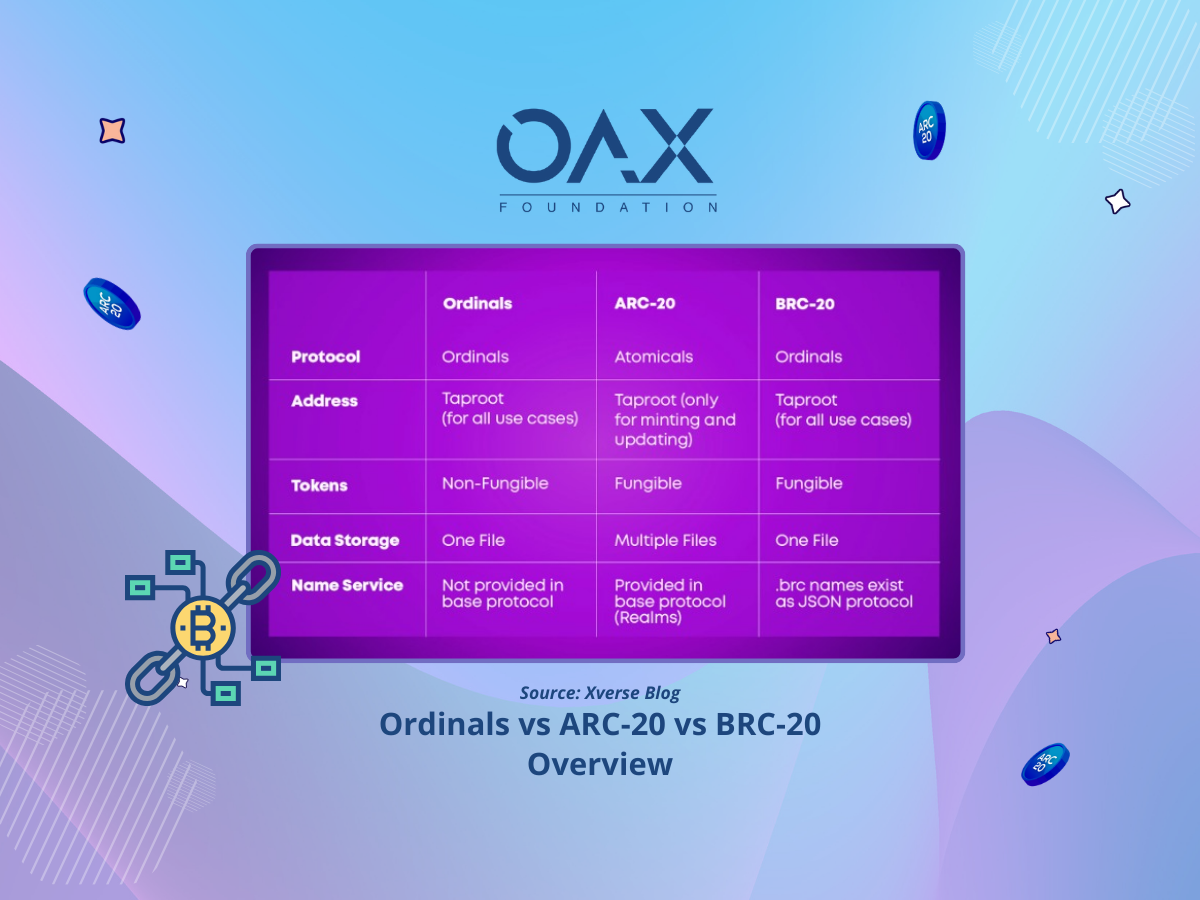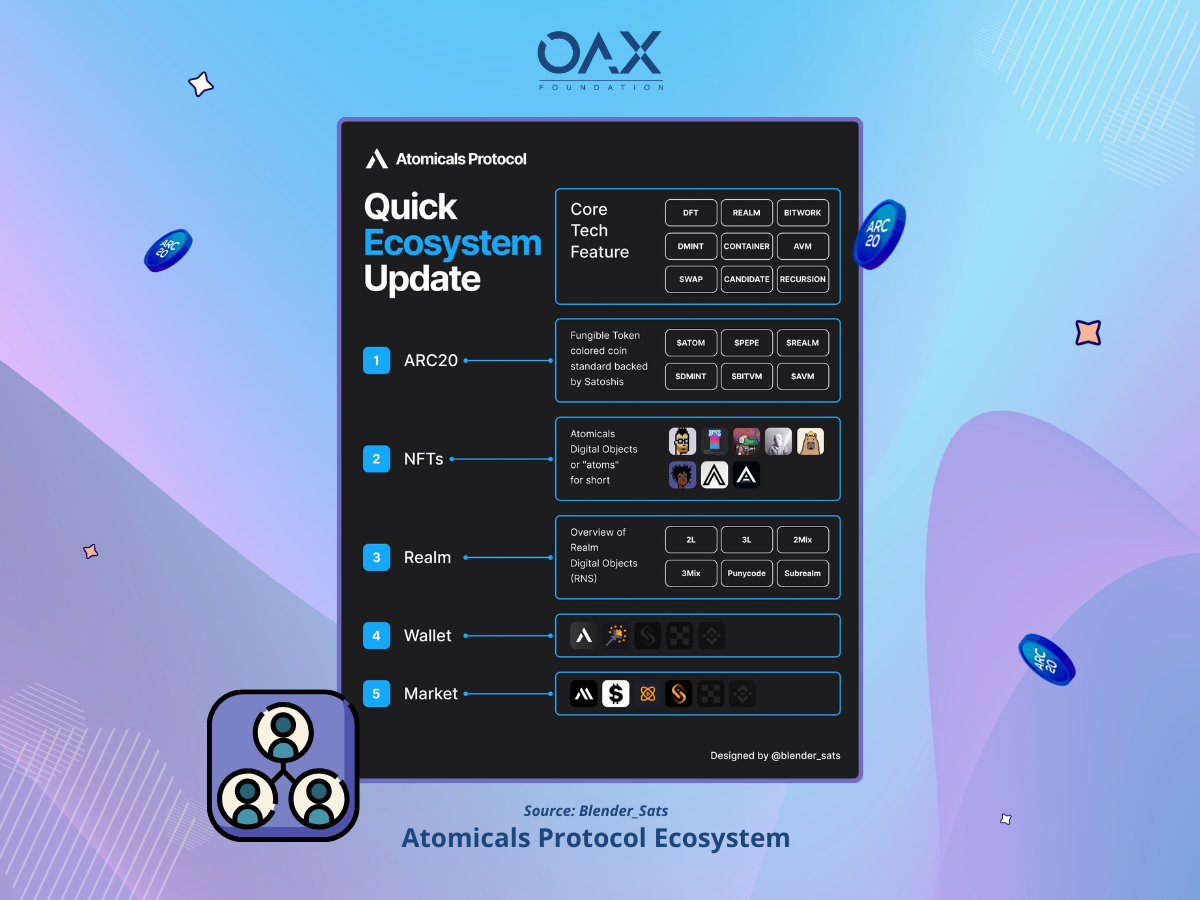
Understanding ARC-20: Tokenization on the Bitcoin Network
Following on our recent discussion in the OAX Foundation social media, we have received an overwhelming response on the Atomicals protocol, which signifies a pivotal shift in how we create and manage digital assets. Among its innovations is the ARC-20 token standard, which offers a novel approach to fungible tokens on the Bitcoin network. This article builds on our previous feature on Bitcoin layer 2 to further explore the fundamentals of the new Atomicals protocol and the unique features of ARC-20 tokens, providing insights for those new to this topic.
What Is the Atomicals Protocol?
Atomicals is an open-source protocol designed to create digital objects within the Bitcoin ecosystem, a new paradigm for digital ownership. Each object, referred to as an “Atomical” or “atom,” represents a chain of digital ownership governed by straightforward rules. This protocol allows users to mint, transfer, and update various digital assets, including fungible tokens and non-fungible tokens (NFTs), without relying on separate chains or third-party services.
Key Features of Atomicals
- Native Compatibility: Works seamlessly with any Bitcoin wallet.
- No Separate Layers: Eliminates the need for layer 2 solutions, simplifying interactions.
- Flexible Creation: Supports both static and dynamic digital objects.
What Are ARC-20 Tokens?
ARC-20 tokens represent a significant advancement in creating fungible tokens on the Bitcoin blockchain, inspired by Ethereum’s ERC-20 standard. By employing “colored coins,” ARC-20 tokens assign unique attributes to satoshis, allowing them to signify various digital assets like ownership stakes or loyalty points. Each token is linked to a satoshi, establishing a minimum value and enabling divisibility and trading.
How does it work?
ARC-20 tokens allow for the creation of updatable NFTs and tokens by linking a series of revised transactions instead of relying on the immutable data typical of standard NFTs. This process resembles a collaborative Google Doc, where updates are recorded as new transactions that build on existing data, enabling mutable assets with a clear history. By tracking revisions chronologically, ARC-20 supports dynamic NFTs while maintaining Bitcoin’s security. This innovation navigates blockchain’s immutability by fostering community consensus on interpreting these linked transactions as a single evolving entity.
Minting ARC-20 Tokens
Tokens can be minted through two primary methods:
- Decentralized Minting: Creators can set parameters for total mints and conditions, allowing for a community-driven approach.
- Direct Minting: Involves creating a single transaction for the entire token supply, requiring an upfront commitment of satoshis to enhance credibility.
Comparing ARC-20 and BRC-20
ARC-20 and BRC-20 are both token standards for creating fungible tokens on the Bitcoin network. BRC-20 utilizes the Ordinals protocol to inscribe metadata onto satoshis, while ARC-20 links tokens to satoshis in a more flexible manner. Though both have similarities, they cater to different use cases. Atomicals supports multiple files during minting and includes a built-in ticker name service, offering a more flexible and user-friendly experience.
Key Differences
- File Storage: ARC-20 can store multiple files upon minting, increasing its versatility, while BRC-20 is limited to one file.
- Minting Process: ARC-20 tokens require Proof-of-Work (PoW) for minting, promoting fairness, whereas BRC-20 tokens rely on creating and spending Taproot outputs.

The Synergy Between BRC-20 and ARC-20
While BRC-20 tokens focus on fungibility and are suitable for decentralized applications, ARC-20 tokens enhance tokenization by representing ownership of tangible assets. The combination of these two standards offers exciting possibilities for creating decentralized financial instruments and facilitating seamless ownership transfers, ultimately enhancing the efficiency of blockchain ecosystems.
Opportunities and Challenges for Atomicals The Atomicals protocol opens the door to various applications across multiple fields, including:
- Digital Media and Collectibles
- Gaming Assets
- Decentralized Finance (DeFi)
- Digital Identity Management
- Virtual Land Registries

ARC-20 tokens aim to unify fragmented protocols in the crypto asset space by providing an open-source standard for indexing and managing tokens, potentially streamlining integration for applications and wallets. However, their adoption faces challenges due to existing network effects and the simplicity of BRC-20, which may overshadow ARC-20’s complex features.
Despite its technical advantages, ARC-20 lacks a clear use case, with proposals for applications like NFTs, digital identities, and decentralized finance (DeFi) not gaining significant traction. Without a solid foundation and tangible utility, ARC-20 risks being seen as an elegant but impractical solution in a hype-driven market.
Nonetheless, it presents transformative opportunities for the Bitcoin network, enhancing its functionality beyond a mere store of value by facilitating efficient token creation and transfer, increasing transparency, and minimizing counterfeiting risks. By promoting decentralization and empowering users to control their digital assets, ARC-20’s success will ultimately depend on strong community engagement and collaboration among developers and users to shape its future in the decentralized economy.
Outlook
The Atomicals protocol and ARC-20 tokens represent a significant advancement in the world of digital assets on the Bitcoin blockchain. They provide a standardized approach to managing digital assets, connecting Bitcoin’s native currency with tokenized assets. This innovation has the potential to strengthen decentralized finance and improve asset management capabilities.
As adoption increases, these innovations could greatly impact decentralized finance, asset tokenization, and digital identity management. In a rapidly changing landscape, ARC-20 tokens pave the way for new opportunities and innovations, bridging the gap between Bitcoin’s native currency and tokenized assets as a new contender emerges to challenge the dominant Bitcoin token standards, BRC-20 and REC-20.
In summary, the adoption challenge remains for ARC-20 alongside BRC-20’s leadership spot. While Binance, one of the leading exchanges has taken a supportive stance of ARC-20 by integrating to its Web3 wallet, Bitcoin layer 2 remains to lag behind Ethereum. The OAX Foundation is positive to see continuous innovation within the Bitcoin Network, it is crucial to remain open minded to these new protocols and its use cases, we are yet to witness its impact on the broader digital economy.
Disclaimer: The above is an opinion piece written by an authorized author, but in no way represents the official standpoint of OAX Foundation Limited, nor should it be meant to serve as investment advice.


